Postmortem Examination of a Griffon Vulture Most Likely Killed by Lightning
Abstract
1. Introduction
2. Materials and Methods
3. Results
4. Discussion
5. Conclusions
Author Contributions
Funding
Institutional Review Board Statement
Data Availability Statement
Acknowledgments
Conflicts of Interest
References
- Centers for Disease Control and Prevention. Lightning and Your Safety. Lightning. Available online: https://www.cdc.gov/lightning/about/index.html (accessed on 12 December 2024).
- National Weather Service. Understanding Lightning: Ground Current. Available online: https://www.weather.gov/safety/lightning-science-ground-currents (accessed on 12 December 2024).
- Breuner, C.W.; Sprague, R.S.; Patterson, S.H.; Woods, H.A. Environment, behavior and physiology: Do birds use barometric pressure to predict storms? J. Exp. Biol. 2013, 216 Pt 11, 1982–1990. [Google Scholar] [CrossRef] [PubMed]
- Dänhardt, J.; Lindström, Å. Optimal departure decisions of songbirds from an experimental stopover site and the significance of weather. Anim. Behav. 2001, 62, 235–243. [Google Scholar] [CrossRef]
- Shamoun-Baranes, J.; Van Loon, E.; Alon, D.; Alpert, P.; Yom-Tov, Y.; Leshem, Y. Is there a connection between weather at departure sites, onset of migration and timing of soaring-bird autumn migration in Israel? Glob. Ecol. Biogeogr. 2006, 15, 541–552. [Google Scholar] [CrossRef]
- Sapir, N.; Wikelski, M.; Avissar, R.; Nathan, R. Timing and flight mode of departure in migrating European bee-eaters in relation to multi-scale meteorological processes. Behav. Ecol. Sociobiol. 2011, 65, 1353–1365. [Google Scholar] [CrossRef]
- Gomes, C. Lightning safety of animals. Int. J. Biometeorol. 2012, 56, 1011–1023. [Google Scholar] [CrossRef] [PubMed]
- Price, C. Thunderstorms, lightning and climate change. In Lightning: Principles, Instruments and Applications; Springer: Dordrecht, The Netherlands, 2008; pp. 521–535. [Google Scholar] [CrossRef]
- Romps, D.M.; Seeley, J.T.; Vollaro, D.; Molinari, J. Climate change. Projected increase in lightning strikes in the United States due to global warming. Science 2014, 346, 851–854. [Google Scholar] [CrossRef] [PubMed]
- Parvanov, D.; Stoynov, E.; Vangelova, N.; Peshev, H.; Grozdanov, A.; Delov, V.; Iliev, Y. Vulture mortality resulting from illegal poisoning in the southern Balkan Peninsula. Environ. Sci. Pollut. Res. Int. 2018, 25, 1706–1712. [Google Scholar] [CrossRef] [PubMed]
- Kmetova–Biro, E.; Stoynov, E.; Ivanov, I.; Peshev, H.; Marin, S.; Bonchev, L.; Stoev, I.P.; Stoyanov, G.; Nikolova, Z.; Vangelova, N.; et al. Re-introduction of Griffon Vulture (Gyps fulvus) in the Eastern Balkan Mountains, Bulgaria—Completion of the establishment phase 2010–2020. Biodivers. Data J. 2021, 9, e66363. [Google Scholar] [CrossRef] [PubMed]
- Best, R.H. Lightning stroke in swine. Can. Vet, J. 1967, 8, 23–24. [Google Scholar]
- Van Alstine, W.G.; Widmer, W.R. Lightning injury in an outdoor swine herd. J. Vet. Diagn. Investig. 2003, 15, 289–291. [Google Scholar] [CrossRef] [PubMed]
- Boevé, M.H.; Huijben, R.; Grinwis, G.; Djajadiningrat-Laanen, S.C. Visual impairment after suspected lightning strike in a herd of Holstein-Friesian cattle. Vet. Rec. 2004, 154, 402–404. [Google Scholar] [CrossRef]
- Evans, P.M.; Armour, M.D.; Dubielzig, R.R. Ocular lesions following suspected lightning injury in a horse. Vet. Ophthalmol. 2012, 15, 276–279. [Google Scholar] [CrossRef] [PubMed]
- Zele, D.; Bidovec, A.; Vengust, G. Atmospheric flash injuries in roe deer (Capreolus capreolus). Acta Vet. Hung. 2006, 54, 43–49. [Google Scholar] [CrossRef] [PubMed]
- Spalding, M.G.; Terrell, S.; Brooks, W.B. Pathology Associated with Lightning Strike and Drowning Mortality of Whooping cranes in Florida. Available online: https://digitalcommons.unl.edu/nacwgproc/147/ (accessed on 12 December 2024).
- Schulze, C.; Peters, M.; Baumgärtner, W.; Wohlsein, P. Electrical Injuries in Animals: Causes, Pathogenesis, and Morphological Findings. Vet. Pathol. 2016, 53, 1018–1029. [Google Scholar] [CrossRef] [PubMed]
- Bian, X.; Wu, Y.; Zhou, Q.; Jiang, R.; Zhang, Y.; Chen, L.; Qi, Q.; Lyu, W. Simulation of Cloud-to-Ground Lightning Strikes to Wind Turbines Considering Polarity Effect Based on an Improved Stochastic Lightning Model. Atmosphere 2023, 14, 108. [Google Scholar] [CrossRef]
- National Weather Service. Lightning Science: Five Ways Lightning Strikes People. Available online: https://www.weather.gov/safety/lightning-struck (accessed on 12 December 2024).
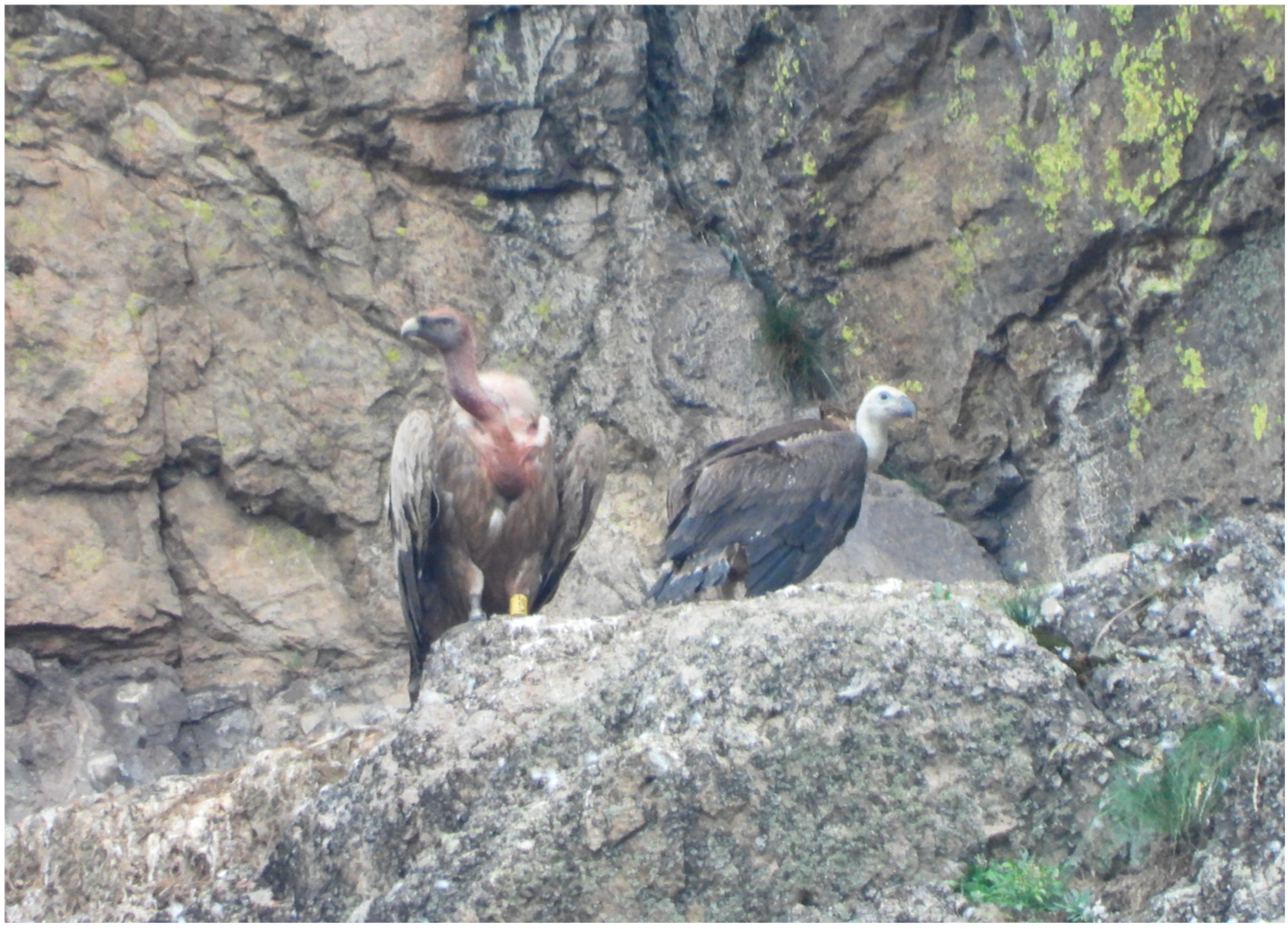
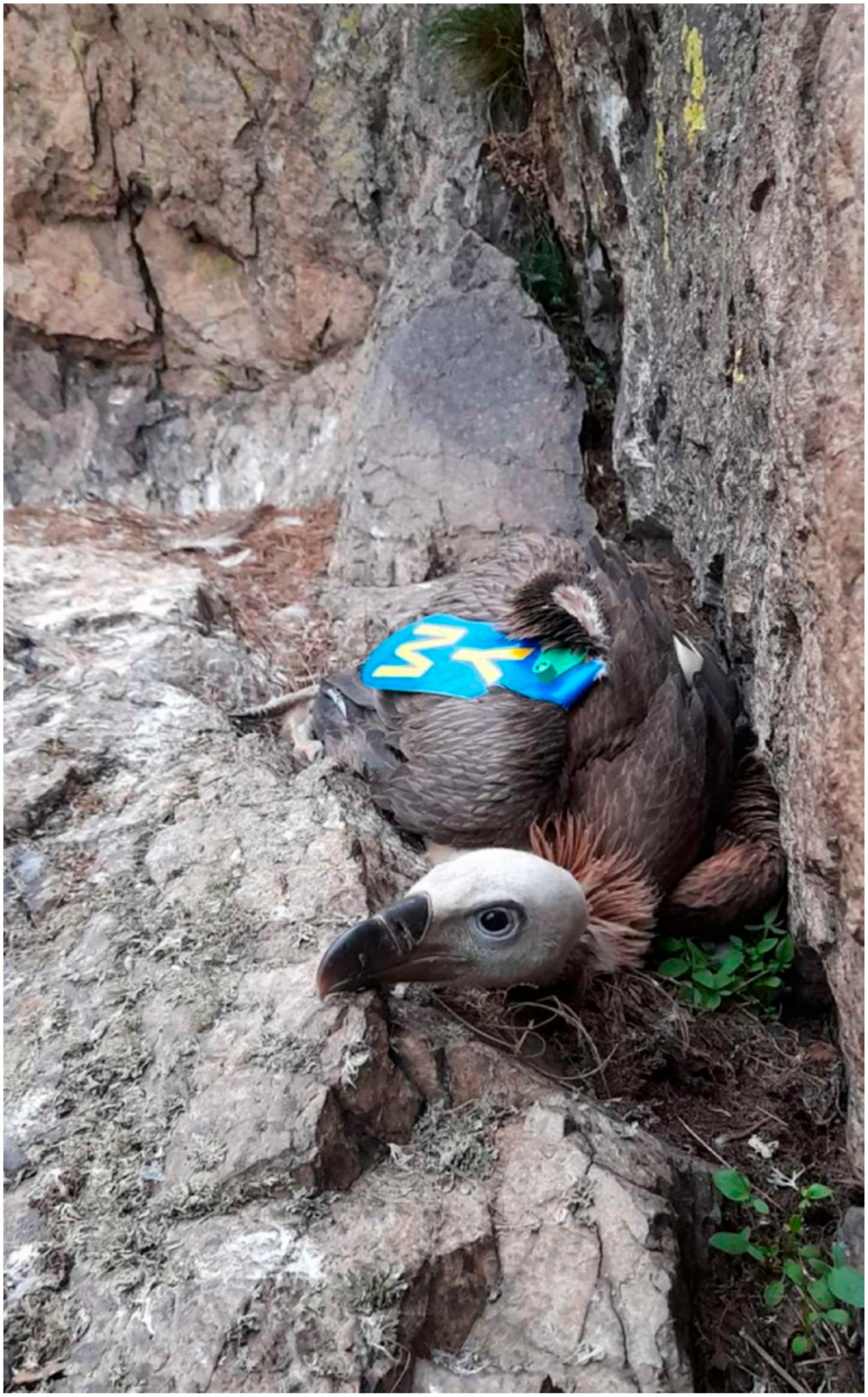
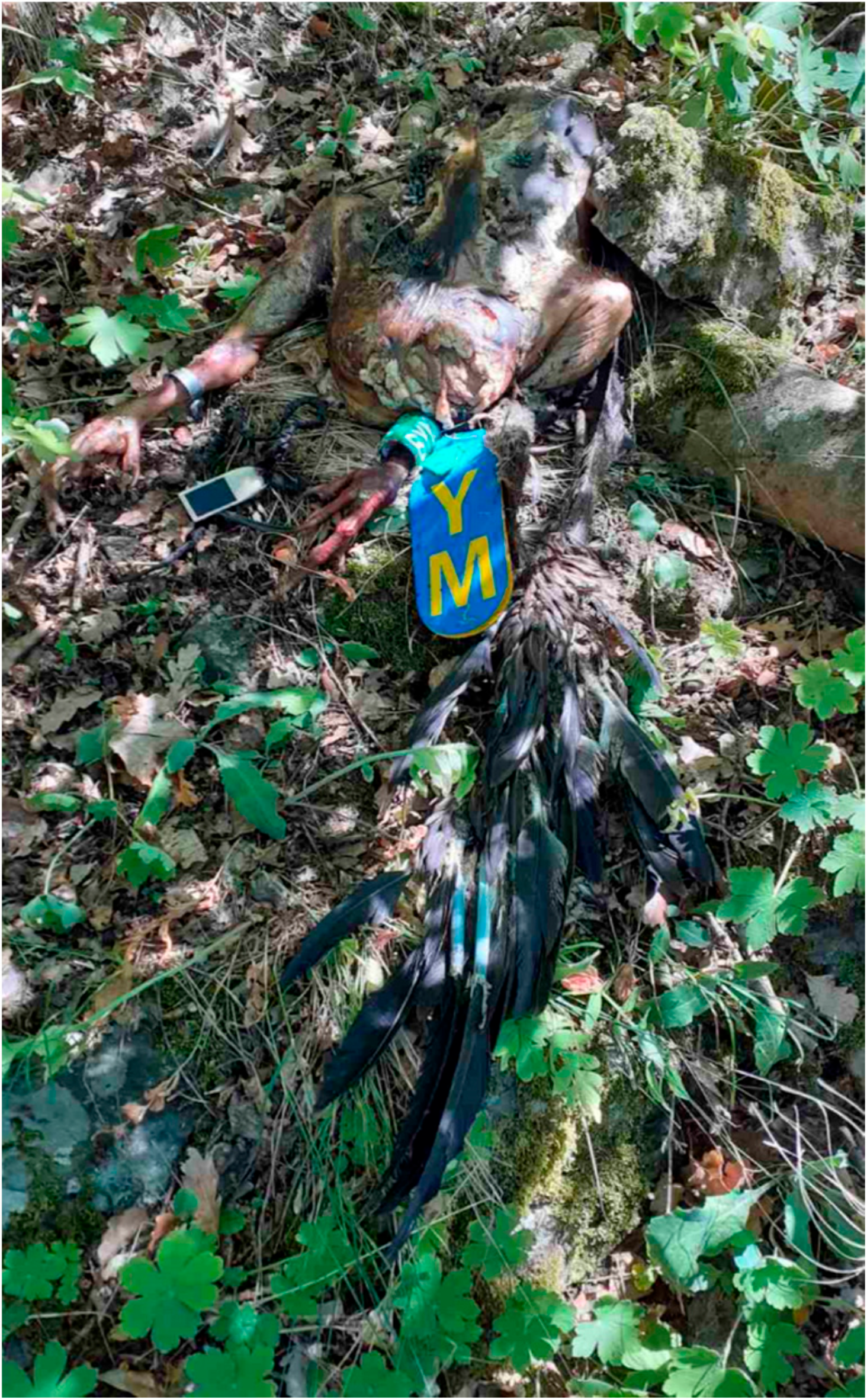
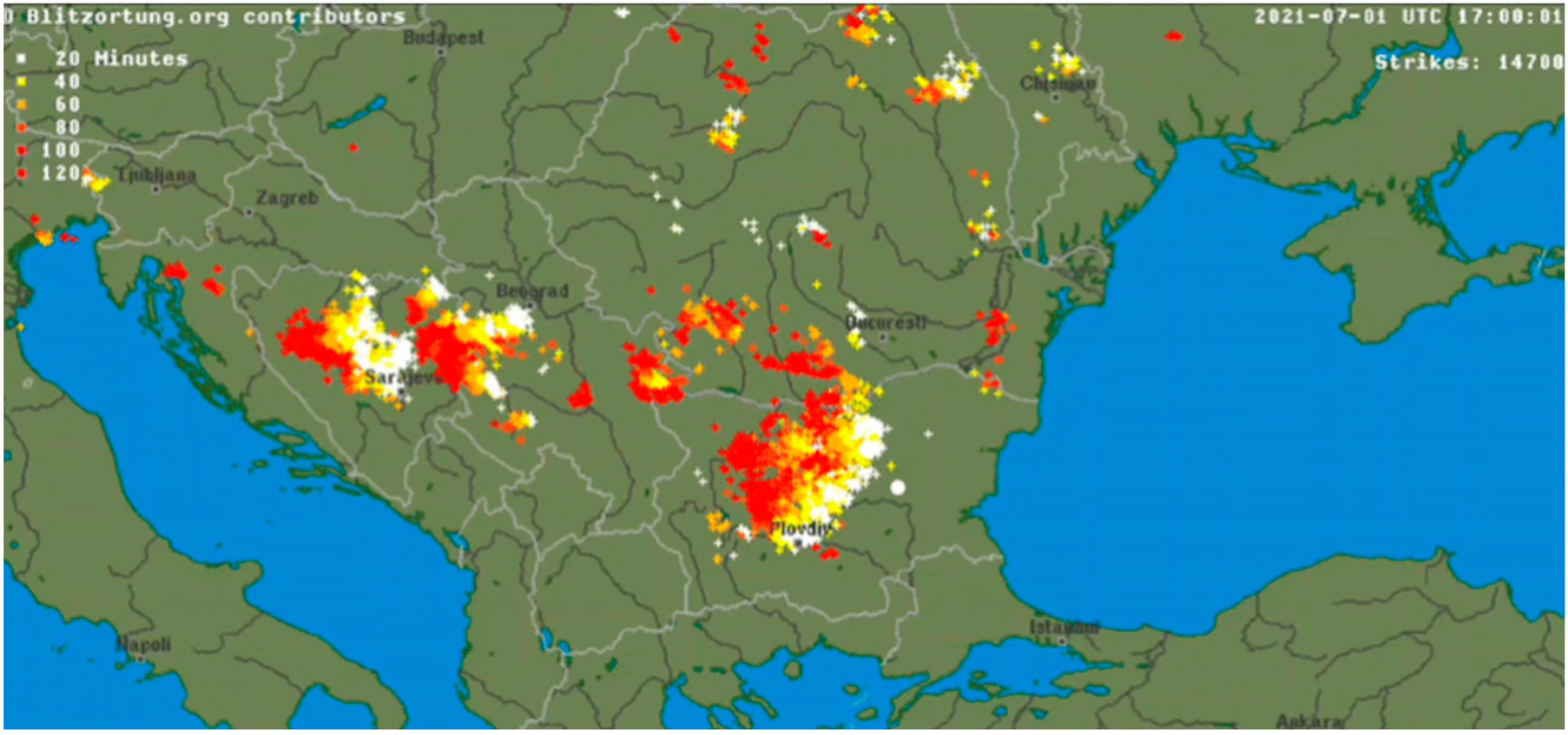
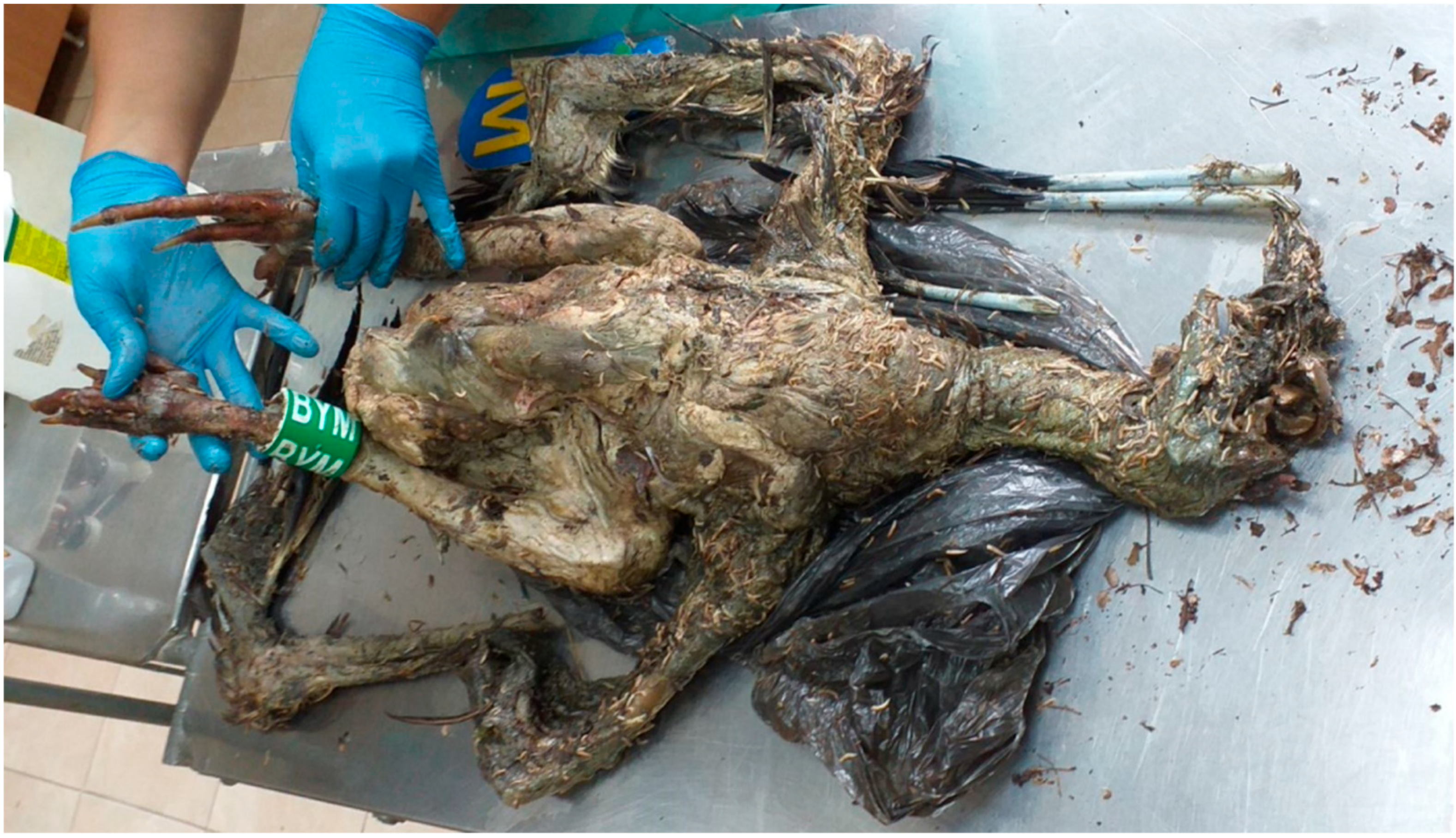
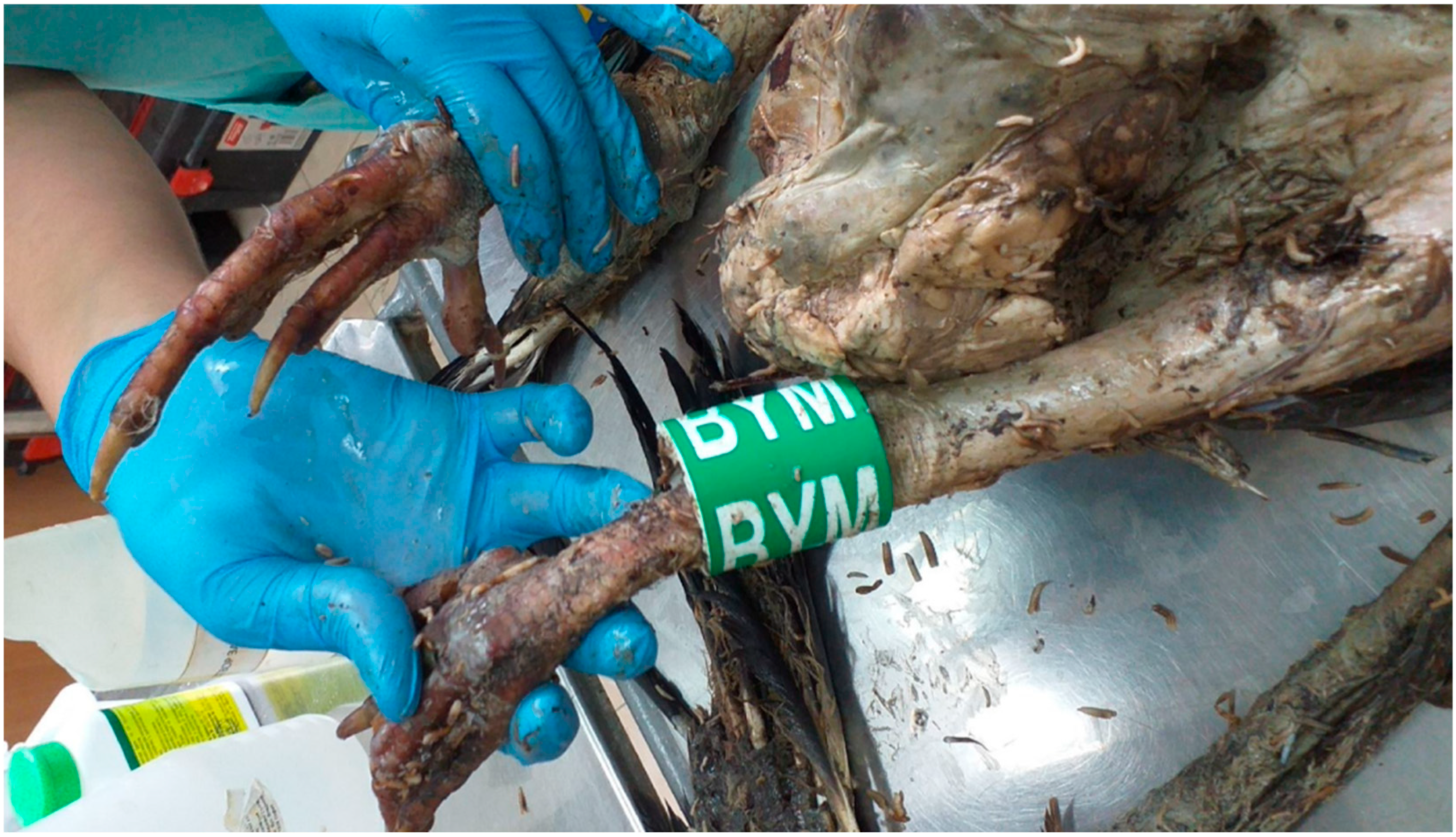
| Animal Type | Pathoanatomic Manifestations of the Lightning Strike |
|---|---|
| Pig | Extensive hemorrhage in the pelvic region, fractures to the pelvis, last lumbar vertebra and ribs [12]; Fracture to the last lumbar vertebra and sacrum, displacement of the sacrum with transection of the spinal cord and spinal nerves, hemorrhages around the fractures [13] |
| Cow | Cerebrocortical necrosis [14] |
| Horse | Bilateral diffuse corneal edema [15] |
| Roe deer | Scorched streaks on the skin with hair loss, aspirated light-red foam in the trachea and bronchi, alveolar and epicardial hemorrhages, kidney and liver hyperemia [16] |
| Whooping crane | Coagulation necrosis in the kidneys, unspecified histological changes in the peripheral nerves, air sac membranes and heart [17] |
Disclaimer/Publisher’s Note: The statements, opinions and data contained in all publications are solely those of the individual author(s) and contributor(s) and not of MDPI and/or the editor(s). MDPI and/or the editor(s) disclaim responsibility for any injury to people or property resulting from any ideas, methods, instructions or products referred to in the content. |
© 2024 by the authors. Licensee MDPI, Basel, Switzerland. This article is an open access article distributed under the terms and conditions of the Creative Commons Attribution (CC BY) license (https://creativecommons.org/licenses/by/4.0/).
Share and Cite
Petrov, R.; Asenov, S.; Ivanov, I. Postmortem Examination of a Griffon Vulture Most Likely Killed by Lightning. Diversity 2024, 16, 774. https://doi.org/10.3390/d16120774
Petrov R, Asenov S, Ivanov I. Postmortem Examination of a Griffon Vulture Most Likely Killed by Lightning. Diversity. 2024; 16(12):774. https://doi.org/10.3390/d16120774
Chicago/Turabian StylePetrov, Rusko, Svetoslav Asenov, and Ivelin Ivanov. 2024. "Postmortem Examination of a Griffon Vulture Most Likely Killed by Lightning" Diversity 16, no. 12: 774. https://doi.org/10.3390/d16120774
APA StylePetrov, R., Asenov, S., & Ivanov, I. (2024). Postmortem Examination of a Griffon Vulture Most Likely Killed by Lightning. Diversity, 16(12), 774. https://doi.org/10.3390/d16120774





